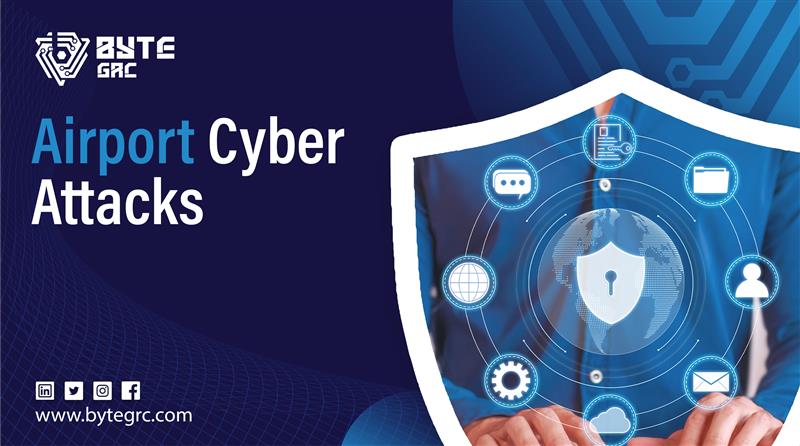
Table of Contents
Preventing Airport Cyber Attacks: Best Practices for Airport Security
In today’s world, airports are not just about planes and passengers. They’re also massive hubs of technology, handling everything from passenger check-ins to flight control systems. With all this tech, it’s no surprise that Airport Cyber Attacks are becoming more common and more dangerous.
In this article, we will go through some best practices to prevent airport cyber attacks. Also, common airport cyber attacks threats, and challenges in aviation cybersecurity.
Common Cyber Threats to Airports
Here are some common airport cyber attacks threats:
Ransomware
Ransomware attacks like the one at Albany Airport are becoming more common. These attacks freeze systems and demand payment to restore access. For airports, this can disrupt flights, customer service, and even safety systems.
Phishing & Social Engineering
Hackers use clever tricks to fool people. Fake airport Wi-Fi networks and emails from “airport staff” are common phishing tactics. These can steal login details or install malware on devices.
Insider Threats
Sometimes the danger comes from inside. For example, when a USB stick containing sensitive Heathrow Airport data was found by a passerby, it showed how easily data could leave secure areas.
DDoS Attacks
These attacks overload airport websites, making them crash. U.S. and Indian airports have experienced this, causing confusion for passengers trying to check flight updates or book services.
IoT Vulnerabilities
Airports use smart devices like baggage scanners and cameras. If these are not secured, they can be hacked. Unsecured Internet of Things (IoT) devices are a weak point in airport security.
Unique Challenges in Aviation Cybersecurity
The following are some challenges that come with airport cybersecurity:
Old Systems
Many airports still use outdated software. These older systems may not have modern security features, making them easier for hackers to break into.
Complex Supply Chains
Airports work with many outside companies, from airlines to food vendors. If one of these partners gets hacked, it can affect the whole airport.
Political Targeting
Some attacks come from state-backed hackers. These groups may target airports to make a political statement or cause major disruptions.
Best Practices for Airport Cybersecurity
Here are the best practices for aviation cybersecurity to prevent airport cyber attacks:
Network Security & Segmentation
- Zero Trust Architecture: This means no device or user is trusted by default. For example, the air traffic control system should be separated from the public Wi-Fi network.
- Firewalls & Intrusion Detection: These tools watch for and block suspicious activity.
- VPNs & Encryption: Using tools like WPA3 for Wi-Fi and TLS 1.2 helps keep data safe when it moves between systems.

Access Control & Authentication
- Multi-Factor Authentication (MFA): Adds extra layers to logins, like a code sent to your phone.
- Role-Based Access Control (RBAC): Only certain people can see or use sensitive data.
- Endpoint Security: This includes antivirus tools and secure settings on all devices, from check-in kiosks to employee laptops.
Proactive Threat Management
- Regular Patching: Fix software bugs before hackers can use them.
- Continuous Monitoring: AI tools can spot strange behavior fast.
- Incident Response Plans: Airports need to practice what to do if they get hacked.
Employee Training & Culture
- Phishing Simulations: Practice helps employees spot fake emails.
- USB/Device Policies: Make rules about what devices can be used, and where.
- Leadership Involvement: When top leaders care about cybersecurity, the whole team takes it seriously.
Third-Party Risk Mitigation
- Vendor Compliance: Work only with partners who follow strict cybersecurity rules.
- Contractual Security Clauses: Include cybersecurity in all contracts.
Regulatory Frameworks & Collaboration
Compliance Standards
- TSA Requirements: These include incident reporting and network separation.
- ICAO Guidelines: Help create global rules and best practices.
- NIS2 Directive: Sets rules across the EU to protect critical infrastructure, including airports.
Public-Private Partnerships
- Aviation ISACs: Share threat information between airports.
- Government Collaboration: U.S. agencies like the FAA and CISA work with airports to boost security.
Case Studies & Lessons Learned
- Singapore Changi Airport: Uses AI to watch for unusual behavior in real-time.
- London Heathrow: Improved after the USB stick issue by tightening network access and training staff.
- Albany & Bristol Airports: Show the damage caused when systems aren’t prepared.
Future Trends & Emerging Technologies
- AI & Machine Learning: These can predict attacks before they happen.
- Quantum Encryption: This new tech could make data almost impossible to hack.
- Biometric Risks: While facial recognition is convenient, it must be protected carefully.
Conclusion
As technology keeps changing, airports must stay one step ahead. Airport cyber attacks are not going away, but with the right steps, we can make airports much safer. From better training to stronger networks, every part of the airport has a role to play.
For those looking to take airport cybersecurity seriously, platforms like Byte GRC can help you manage risks, stay compliant, and build a culture of security.
FAQs
1: What is an airport cyber attack?
It’s when hackers target airport systems, like websites, check-in tools, or baggage handling tech.
2: Why are airports a common target?
Because they use a lot of tech and handle sensitive data that hackers want.
3: How can airports stay protected?
By using strong passwords, updating software, training staff, and working with security partners.
4: What is Byte GRC?
It’s a platform that helps manage cybersecurity risks and stay up to date with industry rules.
5: Are biometric systems safe?
They can be, but only if the data is encrypted and stored securely.

